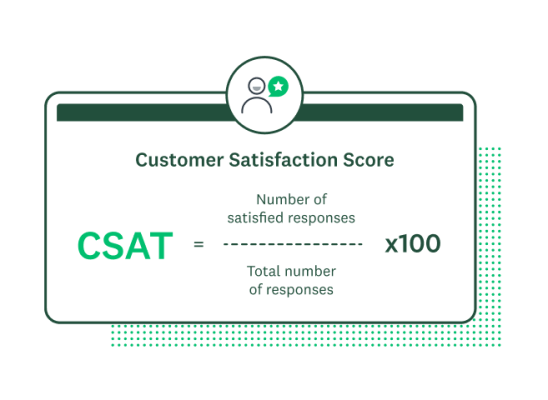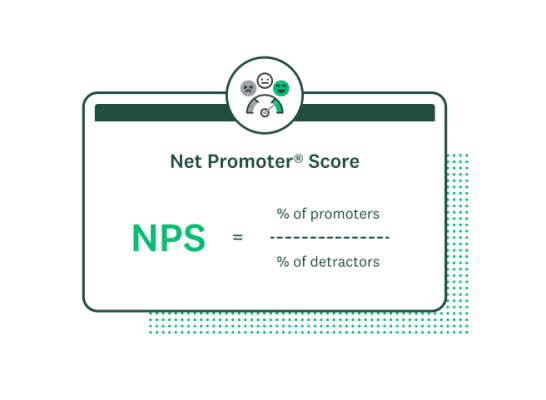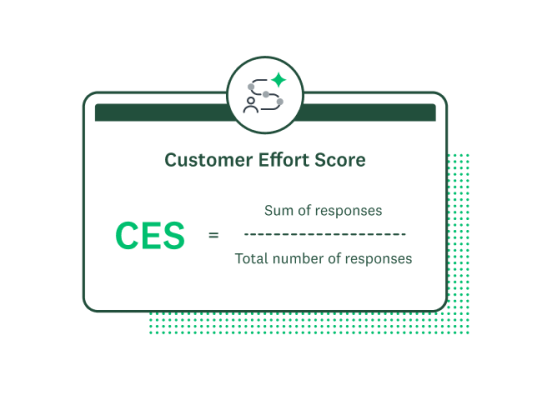Customer advocacy: Definition, benefits, and strategies to drive business growth

- Customer advocacy refers to the strategy a business uses to prioritize the needs and interests of its customers
- You can measure customer advocacy by analyzing Customer Effort Score (CSAT), Net Promoter Score® (NPS), Customer Effort Score (CES), and Customer Lifetime Value (CLV).
- Customer advocacy programs can increase brand loyalty, enhance word-of-mouth marketing, and drive business growth.
- There are many tactics to improve customer advocacy, including delivering an exceptional customer experience, identifying and engaging advocates, and collecting and acting on feedback.
Customer advocacy transforms happy customers into enthusiastic promoters of your brand. These advocates can significantly enhance your company's reputation, drive growth, and provide valuable insights for continuous improvement.
A customer advocacy program formalizes this approach, focusing on gathering and acting on customer feedback. By understanding and addressing customer needs, businesses can build stronger relationships and foster loyalty. This program boosts brand credibility and creates a community of dedicated customers who actively support and promote your brand.
What is customer advocacy?
Customer advocacy is a business strategy focused on prioritizing customer interests. It aims to create loyal customers who actively promote a brand to others, turning satisfied customers into enthusiastic advocates.
Why is customer advocacy important?
Customer advocacy builds trust and credibility for a business. When customers genuinely support a brand, their recommendations carry more weight. This organic promotion can significantly enhance a company's reputation and drive growth.
- Trust and credibility: When customers advocate for a brand, their genuine recommendations build trust. Potential customers are more likely to believe peers over advertisements, making advocacy a powerful marketing tool.
- Competitive advantage: Advocacy sets a brand apart. Enthusiastic customers can attract new business. This gives your brand a distinct edge over competitors who rely solely on traditional marketing.
- Feedback: Advocates provide valuable insights. Their feedback helps refine products and services, meeting real customer needs. This continuous improvement feedback loop keeps your business aligned with market demands.
How to measure customer advocacy
There is no one singular measurement for customer advocacy. Instead, you must monitor several areas of the business to evaluate and improve advocacy.
Customer feedback surveys and various business metrics provide valuable insights into customer loyalty and satisfaction. Key performance indicators (KPIs) help track and evaluate this advocacy effectively. Here are four KPIs you can track to understand customer advocacy.
Customer Satisfaction Score (CSAT)

CSAT measures customer satisfaction with a specific interaction or overall experience. High CSAT indicates a satisfied customer base, which can lead to stronger advocacy. It also helps identify areas for improvement and track changes over time.
After a customer interaction, send a CSAT survey asking them to rate their satisfaction on a scale, typically 1 to 5. Calculate the average score to get your CSAT.
Net Promoter Score (NPS)

The NPS measures the likelihood of customers recommending your brand to others. NPS directly links to customer loyalty and advocacy. A higher NPS means more customers will promote your brand, driving business growth.
An NPS survey asks customers, "On a scale of 0-10, how likely are you to recommend our company to a friend or colleague?" To calculate the NPS, subtract the percentage of detractors (0-6) from promoters (9-10) to get your NPS.
Compare your NPS to your industry’s NPS benchmarks for customer loyalty to determine how you compare to competition and make an action plan for improvement, if needed.
Customer Effort Score (CES)

The CES measures the ease of a customer's experience with your company. A lower effort score means customers find it easy to interact with your brand, leading to higher satisfaction and loyalty. Reducing customer effort can increase advocacy and decrease churn.
After an interaction, use a CES survey to ask customers, "How easy was it to solve your issue?" Use a scale from "Very difficult" to "Very easy."
Customer Lifetime Value (CLV)
Customer lifetime value predicts the total revenue a customer will generate while with your company. High CLV indicates loyal customers who continually support your business. It helps prioritize efforts to retain and nurture valuable customer relationships.
Benchmarking is essential to understand your current state and how you compare against competition. SurveyMonkey Benchmarks help you accurately assess performance, identify best practices, and make informed decisions to enhance customer loyalty and advocacy.
How to increase customer advocacy
There are several strategies you can use to increase customer advocacy that work together, improving customer satisfaction and driving business results.
Deliver an exceptional customer experience
Exceptional experiences create loyal customers more likely to advocate for your brand. To achieve this, train your team to prioritize customer satisfaction and ensure seamless interactions across all touchpoints. Likewise, address issues promptly and effectively, turning potential detractors into advocates.
Identify and engage advocates
Identifying brand advocates allows you to nurture and leverage their enthusiasm. Use surveys to pinpoint your most satisfied customers and engage with them through personalized communication and exclusive offers. Recognize their loyalty to reinforce positive behaviors.
Building a relationship with your advocates ensures they continue to promote your brand. Personal touches and exclusive deals make them feel appreciated, increasing their likelihood of recommending your business to others.
Build a community
A strong community fosters a sense of belonging and mutual support. Create forums or groups where customers can connect, share experiences, and support each other to build a loyal community around your brand. Fostering community engagement can transform customers into passionate advocates.
Gymshark, Bali Body, and Spanx are excellent examples of brands that succeeded by building communities of advocates. These companies entered highly competitive industries and leveraged a community of willing, vocal advocates to earn market share from well-established global brands.
Incentivize advocacy through affiliate and rewards programs
Rewards encourage repeat purchases and referrals. Offer incentives for customers who refer new clients or make repeat purchases. Exclusive offers and rewards for loyal customers enhance their connection to your brand.
Implementing affiliate programs or loyalty schemes can significantly boost customer advocacy. These programs motivate customers to spread the word about your business, leveraging their networks to expand your reach.
Collect and act on feedback
Regular feedback helps you understand and improve customer experiences. Use customer feedback surveys and reviews to gain insights into customer successes and pain points. Show customers that their input leads to tangible improvements.
By acting on feedback, you demonstrate that you value customer opinions. This responsiveness fosters trust and loyalty as customers see their concerns addressed and suggestions implemented.
Empower employees
Motivated employees deliver better customer service, enhancing overall customer satisfaction. Encourage employees to go above and beyond for customers by recognizing and rewarding exceptional service.
Empowered employees act as brand ambassadors, creating positive experiences that lead to increased customer advocacy. Their enthusiasm and dedication can significantly impact customer loyalty and brand reputation.
How to implement a customer advocacy program

Implementing a customer advocacy program involves a strategic process focused on gathering and acting on customer feedback. Surveys are essential for understanding customer needs and identifying potential advocates.
A successful customer advocacy program builds stronger customer relationships, boosts brand credibility, and drives organic growth. Here are the steps to create and implement an effective customer advocacy program:
Step 1: Define program objectives
Start by setting clear objectives for your advocacy program. Determine what you want to achieve, such as increasing referrals, improving customer satisfaction, or boosting brand loyalty. Clear goals guide your strategy and help measure success.
Identify specific, measurable targets. For example, aim to increase referrals by 20% within twelve months. Defined objectives provide direction and allow you to track progress effectively.
Step 2: Identify advocates
Look for advocates among your most satisfied customers. Analyze customer data to pinpoint those who regularly engage with your brand and provide positive feedback. These are your potential advocates.
Step 3: Survey advocates
After identifying potential advocates, you should regularly survey them to understand their motivations and behaviors, as well as to gather insights and feedback. Their responses will contribute to the foundation of your customer advocacy program.
Use structured surveys with specific questions to gain actionable insights. Ensure you follow up on their responses to show that their feedback is valued and considered in your business decisions.
Here are some examples of survey questions and follow-up questions you can use for your customer feedback surveys:
- CSAT question:
- How satisfied are you with our product/service? (Scale of 1-5)
- Follow-up questions:
- What do you like most about our product/service?
- How can we improve your experience with our brand?
- NPS question:
- How likely are you to recommend our product/service to a friend or colleague? (Scale of 0-10)
- Follow-up question:
- Have you ever recommended our brand to others? If so, why?
- Competitive analysis survey questions:
- What motivated you to choose our brand over competitors?
- What additional features or services would you like us to offer?
- CES survey question:
- How easy was it to resolve your last issue with our customer service? (Scale of 1-5)
- Follow-up question:
- What can we do to make your experience with our brand more enjoyable?
- Social media engagement question:
- Do you follow us on social media? If yes, what type of content do you find most engaging?
These surveys and questions provide clear, actionable insights that can help refine your customer advocacy program and address areas for improvement.
Benefits of customer advocacy
Enhanced word-of-mouth marketing
Word-of-mouth marketing can drive business success. One compelling example is Blendtec's "Will It Blend?" viral campaign.
By blending unusual items like iPhones and golf balls, Blendtec created content that was surprising, entertaining, and highly shareable. This shareable content led to an exponential increase in brand awareness and sales, demonstrating how word-of-mouth can effectively amplify marketing efforts.
The success of Blendtec's campaign highlights the essential role of customer advocacy in word-of-mouth marketing. When customers are delighted by a brand's products or content, they naturally share their positive experiences with others. This organic advocacy increases brand visibility and builds trust and credibility among potential customers.
Creating memorable and shareable experiences can turn satisfied customers into enthusiastic advocates who drive word-of-mouth marketing and contribute to sustained business growth.
Drive business growth
Consistently and proactively delivering superior customer experiences can transform satisfied customers into loyal advocates significantly increase customer satisfaction and loyalty. These advocates are more likely to recommend the brand to others, generating positive word-of-mouth and attracting new customers.
By creating memorable experiences and addressing customer needs effectively, businesses can cultivate a strong base of advocates who actively contribute to business growth through referrals and repeat business.
Gain valuable customer insights
Customers who become advocates for a brand are typically highly engaged and invested in the products or services they use.
These advocates share detailed feedback about their experiences, preferences, and expectations. Creating feedback loops with advocates can identify emerging trends, detect potential issues early, and uncover new opportunities for innovation.
By actively listening to and engaging with these loyal customers, businesses can gather in-depth insights instrumental in refining products, improving services, and tailoring marketing strategies. This continuous flow of valuable information from customer advocates helps companies stay ahead of the competition and better meet the evolving needs of their market.
Frequently asked questions
What is a customer advocacy program?
A customer advocacy program is a strategic initiative designed by businesses to engage and empower their satisfied customers to become vocal supporters and promoters of their brand. The goal is to leverage the positive experiences of these customers to influence others and help grow the business through authentic, word-of-mouth marketing.
How do I measure customer advocacy?
There is no one customer advocacy KPI. However, you can monitor several customer satisfaction metrics to understand your customer’s contentment with your company and products or services. These metrics—CSAT, NPS, CES, and CLV—are good customer advocate identifiers.
How do I increase my customer advocacy?
There are multiple strategies that you can employ to increase your customer advocacy, including delivering great customer service, identifying and engaging advocates, and building and engaging advocates.
Create robust customer feedback loops with SurveyMonkey
Communication is the foundation of a strong customer advocacy program. SurveyMonkey offers expertly designed survey templates that help you gather valuable customer feedback. Use these insights to implement strategies that strengthen your brand and build lasting customer relationships. Enhance your advocacy program with customer surveys from SurveyMonkey today.
NPS, Net Promoter & Net Promoter Score are registered trademarks of Satmetrix Systems, Inc., Bain & Company and Fred Reichheld.
Discover more resources

Customer satisfaction survey templates
Explore our customer satisfaction survey templates to rapidly collect data, identify pain points, and improve your customer experience.

Customer Behavior Analysis: A Complete Guide and Examples
Read our step-by-step guide on conducting customer behavior analysis. Learn how to collect data and improve customer touchpoints.

Empowering CX professionals: Using insights to overcome frontline challenges
Empower your CX team with actionable insights! Watch our webinar for expert strategies on boosting performance and morale.

How to measure & improve CSAT call center scores
Meet customer expectations and create lifelong customers! Learn how to measure call center CSAT and improve customer satisfaction with SurveyMonkey.